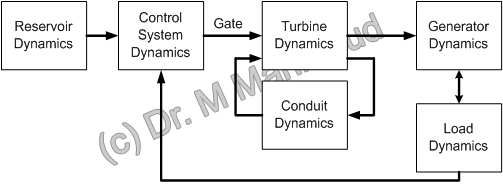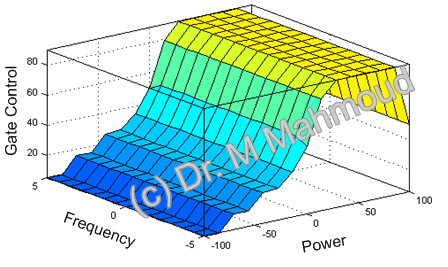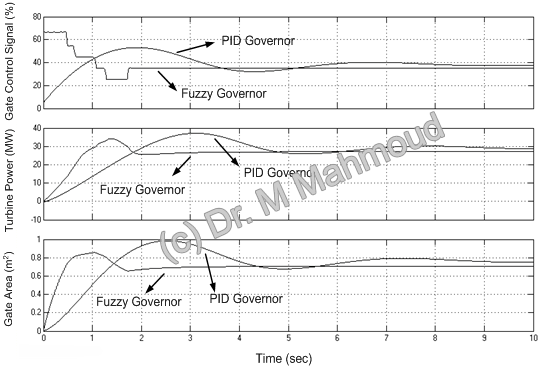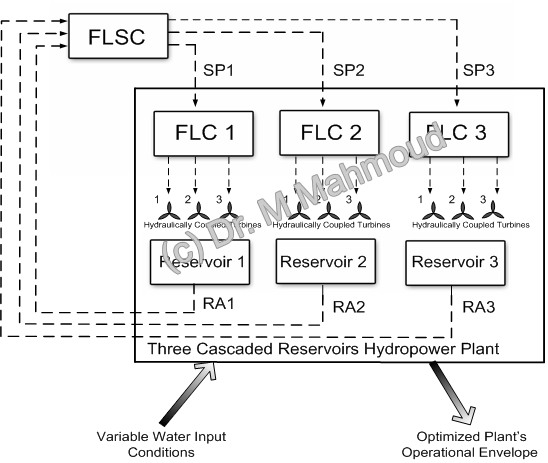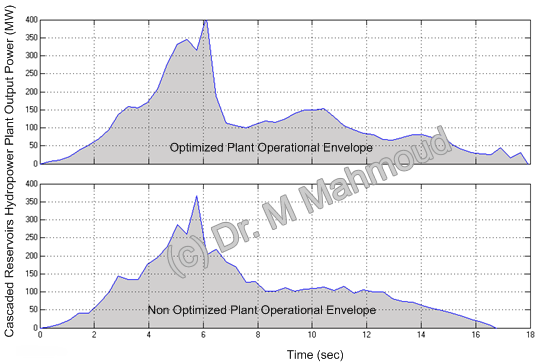
Smart Hydropower Revisited
| |
| Home |
| Publications |
| Research |
| Industrial |
| Smart Hydropower Revisited |
| The River Nile- Qattara Depression Pipeline |
| Useful Links |
| Contact |
| The Idea | Control is a great challenge | The solution | The Model | Fuzzy Turbine Governor |
| Fuzzy Controller for Multiple Hydraulically Coupled Turbines |
| Fuzzy Supervisory Control and Optimization System |
|
To construct an underground tunnels network (or perhaps modifying the existing drain network) that may be fed by rain falls, sustained water, drain water, water floods, and waste recycled water; under community areas that have various earth elevations, and construct an underground collecting reservoir for each area; which will form a small-scale underground cascaded reservoirs hydropower solution that is a freely flowing system controlled by an unmanned smart real-time control system. This control system would monitor, think, and make decisions depends on current environmental conditions. At the right moment it starts up the system, controls and optimizes the flow rates per each cascade power house, controls hydraulic turbines, and exports to power grid until a change in environmental conditions is detected; then it makes a new decisions either go in sleep mode and wait, or proceed to another action. A good example would be the city of Sheffield that has (for example) four different community areas at four different elevation-levels: Crookes, Upper Walkley, Lower Walkley and Hillsborough with a river at the bottom level. This would be a small-scale hydropower scheme. The importance of cascaded reservoirs hydropower systems compared to others is that a single bounded mass of water generates electric energy multiple times instead of once, this is because the water is continuously passed between multiple reservoirs at different elevations until it reaches the bottom or end reservoir. However controlling such a nonlinear system is a great challenge which we are going to discuss it in following paragraphs. |
Control is a great challenge... |
The important task here is to manage and control the multiple water reservoirs and flow rates in real time for a continuous stable and optimal power generation, not only on individual levels but also on the global level. The problem here is the complex nonlinear dynamics of such a system. The nonlinear dynamics of such a system can be classified as follows; firstly on the individual level each plant of the cascaded system has its own multiple and hydraulically coupled turbines where any uncontrollable hydraulic mass oscillations due to water hammer can destabilize the system and transfer the oscillations to the electric power grid, and export hydraulic transients to the rest of the cascaded hydraulic systems. Secondly on the global level the system may receive time-varying and random inputs such as rain falls or a sudden increase or decrease of other water resources, in this case the system’s local and global control strategies and the operational set points have to be revised so that the variable water resources conditions are always utilized for optimal power generation with minor water losses and do not exceed the reservoirs’ and penstocks’ operational capacities. Thirdly the mathematical relationships between reservoirs’ levels and flow rates are nonlinear, and the relationships between the valves’ openings at turbines’ admissions and the resultant generated powers are also nonlinear. In addition to those nonlinear dynamics, the system has to cope with random load demands or rejections from the grid where power and frequency regulations may always be needed. Back to top  |
The solution... |
To Build a nonlinear mathematical model of the cascaded reservoirs hydropower system for the simulation, design, and test of our control system. To design a fuzzy turbine governor replacing the classical PID controller. To design a fuzzy controller for multiple hydraulically coupled turbines under nonlinear and interacting process conditions. To design a fuzzy supervisory control and optimization system for geographically-separated hydraulic systems. Back to top |
The Model... |
A cascaded reservoirs hydropower plant comprises multiple reservoirs and power houses at different elevations where the water is continuously passed between them, can be represented by this figure: A mathematical model for each dynamical module is required. Applying some energy and motion equations, with adding turbine equations, pressure waves, and other disturbances; a nonlinear mathematical model for each dynamical module can be obtained, and hence depicting a global nonlinear mathematical model of the cascaded reservoirs hydropower system with any number of reservoirs. The following plot is the simulation of the cascaded hydropower plant comprised of three reservoirs at 50% turbines' gate positions using the previously developed models. |
The Fuzzy Turbine Governor... |
In the light of real “expert knowledge base” , the fuzzy turbine governor is developed, the following plot shows its control surface for three variables (power-frequency-gate control):
The following plot shows performance of fuzzy versus PID governor: |
|
By using the previous concept of fuzzy governor plus considering the hydraulic coupling interaction and disturbances, another fuzzy controller is developed to control together 3-hydrualicaly coupled turbines, the following plot shows fuzzy controller-Turbines’ error signals under hydraulic coupling disturbance: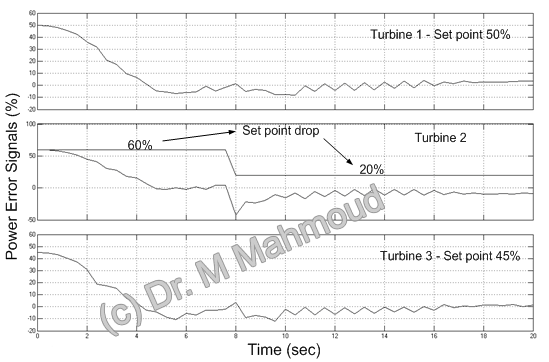 and its disturbance's compensation action is shown in this plot: 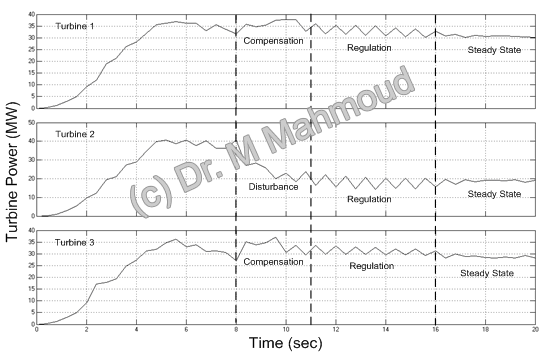 |
|
Finally, the fuzzy supervisory control and optimization system (FLSC) is developed according to a global control and operational strategy of the total cascaded reservoirs hydropower system, illustrated in the following figure: |

